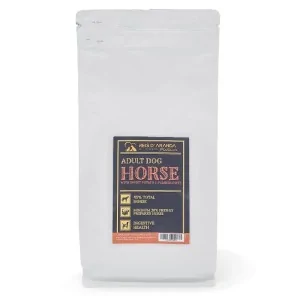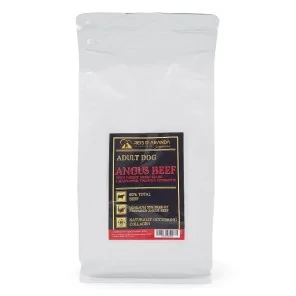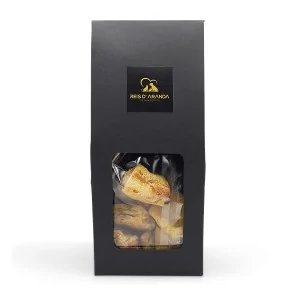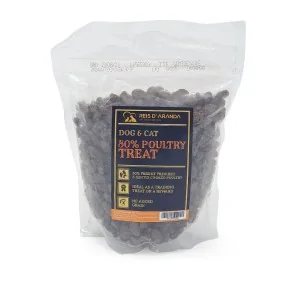The Tornjak originated from genetically homogeneous, almost extinct, indigenous shepherd dogs. These dogs have...
THE BÓXER
INTRODUCTION
The Boxer is a molosser dog of German origin, originating from a breed that was used as a guard dog. It is a cross between the English bulldog and the German bullenbeisser. The Boxer was originally used as a hunting dog, a fighting dog and later as a military and police dog.
THE ORIGIN OF THE BOXER
There is ample documentation on the origins of the Boxer breed, among them the so-called small bullenbeisser.
These bullenbeissers (or bull biters) were hunting dogs, used mainly for wild boar and deer.
However, after the French Revolution, the interest in hunting assistants declined rapidly, as the principalities in Germany were dissolved and thus the majestic hunt came to an end. In addition, firearms had previously made the use of hunting dogs unnecessary. However, the Brabant Bullenbeißer found other areas of application. It was used by private individuals as a guard and protection dog or it was used in fights. The ancestor of the boxer fought bulls (‘Bullenbeißer’) or other dogs. Fortunately, these ‘sports’ were banned in Germany in the middle of the 19th century.
There are several theories as to the origin of the breed's name, although the most widespread is that a dog named Boxl used by a Berlin butcher gave the breed its name.
In 1894, a famous bulldog breeder named Friedrich Roberth was the first person to pronounce ‘Boxer’ on the breed, alluding to the attributes and advantages, as he owned a female Boxer; Friedrich stated that no institution or person was helping to get good Boxers or at least preserve the breed and that this was the only way for Germany to preserve a new breed of dog.
In 1895, three enthusiastic men founded the ‘Boxer Klub’: Elard König, Friedrich Roberth and Rudolf Hoepner. Their aim was to develop the Boxer into a breed of dog with a uniform appearance and certain character traits. Some time earlier, but in the same year, the ‘St. Bernhard Klub’ allowed a trial class for the Boxer at one of its shows. However, only one dog was reported: ‘Mühlbauer's Flocki’. Needless to say, it received the first prize and, at the same time, also became the first dog to be entered in the studbook. Only one year later, the Boxer Club was founded. In 1904 the magazine Boxer der Boxer Blatter was founded.
During the First World War the Boxer was used as a military and messenger dog for the benefit of the German troops, and all Boxers were forced to serve as war dogs. The Second World War almost led to the complete extinction of the Boxer breed. The German army ordered that any purebred bitch of breeding age had to be covered by a male with Körung to supply the army with enough dogs for battle. Dog breeders were given food vouchers to be able to feed their dogs. Because of the difficult situation at that time, Friedrun Stockmann was forced to sell her male Sigurd vom Dom to the United States, where he was bought at the age of 5 years by Barmere Kennels. Siegurd vom Dom had a great influence on modern Boxer breeding and influenced many typical characteristics of today's breed.
The breeding started with a French bitch named Flora, owned by George Muhlbahuer Alt from Munich (Germany). George Alt mated her to a dog known as Boxer and produced a fawn male named ‘Boxer de Lechner’. This dog was in turn mated with his mother and this crossbreeding produced two bitches named Flora II and Alt's Schecken.
On 26 February 1895, Flocki was born, the result of a cross between an old English bulldog named Tom (owned by Dr. Toenniessen) and Alt's Schecken. Flocki was the first dog entered in the German Boxer Stud Book and the winner of the first show of the breed.
On the initiative of Friedrich Roberth, Elard König and Rudolf Hoepner, the Boxer Klub E. V. was founded in 1895 in Munich, Germany, to promote and develop the Boxer breed.
On July 14, 1902 the first breed standard was established and as a general appearance the Boxer is characterised as a medium sized, short haired, strong, sturdy, agile and elegant dog, standing on straight, sturdy limbs and built entirely on the stifle. The type of bite was scissor bite and the head was shortened like that of an alano (ratio 1:1). Subsequently, the bulldog of that time was used in order to achieve the new characteristics which were laid down in the second breed standard in 1905. In 1904 the first edition of the magazine Boxer der Boxer Blätter appeared.
Meta von der Passage (Piccolo von Angentor & Blanka von Angentor) is considered to be the progenitor of the Boxer as we know it today, as she bred with great homogeneity. Meta mated with Flock St. Salvator sired two dogs destined to have a great influence on the breed: Hugo von Pfalzgau and Schani von der Passage. Schani sired Rigo von Angertor & Hugo von Pfalzgau sired Curt von Pfalzgau, sire of Rolf von Vogelsberg. The latter's descendants include Dorian von Marienhof & Sigurd, Utz & Lustig vom Dom (bred by Friederun Stockmann) who gave the breed its worldwide impetus.
The breed standard underwent a revision in 1920. The most outstanding characteristics were the prognathous bite, brachycephalic head (skull to muzzle ratio 2:1), increased size and acceptance of white markings, carried harmoniously and which could not exceed one third of the total coat colour. In 1925 black boxers were excluded, and in 1938 spotted boxers were excluded.
WHAT IS THE BOXER LIKE?
GENERAL APPEARANCE: The Boxer is a medium sized, smooth-coated, strong dog with a short, square build and strong bone. His musculature is dry, strongly developed and in relief. His movements are lively, full of strength and gracefulness. The Boxer should not appear coarse, heavy or light.
IMPORTANT PROPORTIONS:
BODY LENGTH: The structure of the body is square, which means that the horizontal lines of the back and two vertical lines, one touching the point of the shoulder and the other the point of the buttock, form a square.
CHEST DEPTH: The chest reaches to the elbows. The depth of chest corresponds to half the height at the withers.
Length of the muzzle in relation to the length of the skull is 1:2 (measured from the tip of the nose to the inner corner of the eye and from the inner corner of the eye to the occiput respectively).
HEAD : The most important characteristic of the Boxer. It should be well proportioned to the body and should appear neither too light nor too heavy. The muzzle should as far as possible be broad and powerful. The beauty of the head depends on the harmonious relationship of the size of the muzzle to the skull. From whatever angle the head is viewed, from the front, from above or from the side, the muzzle should always be in the correct relationship to the skull. This means that the skull should never appear too small. The head should be dry, i.e. it should show no wrinkles.
By nature, however, wrinkles form on the skull at maximum attention. From the base of the nose towards both sides in a downward direction, wrinkles are permanently formed. The dark mask is confined to the muzzle and should be clearly differentiated from the colour of the head, so that the face does not appear gloomy.
CRANIAL REGION:
SKULL: The skull should be as narrow and angular as possible. It should be slightly arched, neither rounded and short, nor flat or too broad. The occiput should not be too high. The furrow of the forehead should be only slightly marked, and especially between the eyes where it should not be too deep.
STOP: The forehead and muzzle form a pronounced slope. The bridge of nose should not be set back as in the Bulldog, but neither should it be downward.
FACIAL REGION:
NOSE: The nose is broad and black, slightly upturned with broad nostrils. The tip of the nose is slightly higher than the base.
MUZZLE: The muzzle should be strongly developed in all three dimensions. This means that it should be neither pointed, narrow, short or flat.
Its configuration is influenced by:
- The shape of the jaw
- The implantation of the canines
- Conformation of the lips.
The canines should be as far apart as possible and of good length allowing the front surface of the muzzle to be broad and almost square and together with the bridge of the nose to form an obtuse angle. In front, the edge of the upper lip rests on the edge of the lower lip. The upward curving part of the lower jaw together with the lower lip, called the chin, should not protrude too far forward over the upper lip, let alone disappear underneath, but should be well defined both from the front and the side. The incisors of the lower jaw should not be visible when the muzzle is closed. Nor should the Boxer show the tongue when the muzzle is closed. The nasolabial furrow must be clearly visible.
The lips determine the shape of the muzzle. The upper lip is thick and fleshy filling the hollow area formed by the longer lower jaw covering the incisors.
BITE : The lower jaw protrudes into the upper jaw and is slightly curved upwards. The Boxer bites forward. The upper jaw is broad at the level of the skull tapering slightly forward. The bite is powerful and sound. The incisors should be set as evenly as possible in a straight line, the canines well spaced apart and of good size.
CHEEKS : The cheeks are developed in relation to the strong jaw without being too pronounced. They reach the muzzle forming a slight curve.
EYES: The dark eyes must not be too small, protruding or sunken. Their expression radiates energy and intelligence, neither threatening nor piercing.
EARS: The natural ears should be of a suitable size, set on the sides and at the highest point of the skull. They fall flat on the cheeks when the dog is calm, when the dog is at attention - the ears should fall forward with a marked fold.
NECK: The topline forms an elegant curve from a well marked nape of the neck towards the withers. Should be rather long, round, strong, muscular and dry, without dewlap.
BODY: Square. The body rests on solid, straight limbs.
CROSS : Should be well defined.
BACK : Including the kidney area should be short, strong, straight, broad and well muscled.
VROUP: Slightly sloping, curved, flat and broad. The pelvis should be long and in bitches broad.
CHEST : Deep, reaching to the elbows. The depth of chest corresponds to half the height at the withers. Well developed forechest. Ribs well sprung, but not barrel-shaped, reaching broadly to the rear.
BOTTOM LINE: Elegantly curved back. Flanks short, strong and slightly rising.
TAIL : Set on rather high than low. Of normal length and in a natural state.
LIMBS
FOREQUARTERS: The limbs seen from the front should be straight and parallel to each other and have strong bone.
SHOULDERS : Strong and sloping, strongly connected to the chest, not too muscular.
ARM : Long, forming a right angle to the shoulder blade.
ELBOW : Neither too close to the chest nor too wide apart.
FOREARM: Vertical, long, dry and strong muscled.
HINDQUARTERS : Well developed, well defined, but without exaggeration.
PASTERN : Short, almost vertical towards the ground.
HANDS: Small, round, closed, thick and hard pads.
HINDQUARTERS: Strongly muscled. Musculature should be stiff as a board and protruding with plasticity. Hindquarters viewed from behind should be straight.
UPPER THIGH: Long and broad. The angle of the hip and the knee should be as little obtuse as possible.
KNEE: In a standing position should reach forward sufficiently far for a straight line drawn from the iliac crest to the ground to touch it.
LEG : Very muscular.
HOCK: Strong, well defined, but without exaggeration. The angle should be approximately 140°.
METATARSUS : Short, with a slight slope of 95-100° to the ground.
FEET: Slightly longer than above. Tight, pads thick and hard.
GAIT / MOVEMENT: Lively, full of strength and dignity. SKIN: Dry, without folds, elastic, without wrinkles.
HAIR: Short, harsh, glossy and close fitting.
COLOUR: Fawn or brindle. Fawn can be of different shades, from light fawn to dark stag red, however, the intermediate shades are the most beautiful (reddish fawn). Black mask. The brindle variety has on a fawn base, in the above mentioned colourings, dark or black lines in the direction of the ribs. The base colour and the lines must be clearly distinguishable from each other. White markings should not be discarded as they may also be considered attractive.
SIZE:
Measured from withers through elbows to the ground.
- MALES: 57 - 63 cm.
- FEMALES: 53 - 59 cm.
WEIGHT
- MALES: More than 30 kg (with a height at withers of approximately 60 cm).
- FEMALES: Approximately 25 kg (with a height of approximately 56 cm).
FAULTS: Any departure from the foregoing points should be considered a fault and the seriousness with which the fault should be regarded should be in exact proportion to its degree and its effect upon the health and welfare of the dog.
- Lack of Temperament
- Lack of distinction and expression, gloomy face, pinscher or bulldog head.
- Drooping nasal bridge, brown or tan nose, light nose, nose in keeping with outside temperature.
- Muzzle very pointed, teeth or tongue visible when mouth is closed, drooling.
- Pointed jaw, oblique alignment of the teeth, defective, weakly developed teeth, teeth unfit due to disease.
- So called bird of prey eyes, third eyelid visible.
- In non-amputated ears: flapping, half carried ears, erect ears, rose ears.
- Neck short, fat or dewlapped.
- In front, very broad and low set body.
- Hanging trunk, back carried high, deep set, slender back.
- Loin long and narrow, weak attachment to the croup, severely sloping, arched kidney area,
- Croup sloping, narrow pelvis,
- Hanging belly, hollow flanks.
- Low set tail
- Broken tail
- Swaying gait, poor ground covering, stiffness.
- Mask protruding beyond the limits of the muzzle.
- Lines too close together or too wide apart.
- White patches which dull as being a totally or half white head.
- The base colour is covered with more than one third white.
- Interspersed colours.
- Base colour soiled, all other colours.
DISQUALIFYING FAULTS:
- Aggressiveness or extreme shyness.
- Any dog showing clear signs of physical or behavioural abnormalities.
- Short tail from birth.
N.B.:
- Male dogs should have two apparently normal appearing testicles fully descended into the scrotum.
- Only functionally and clinically healthy dogs of typical breed conformation should be used for breeding.
HEALTH OF THE BOXER
The Boxer is a hardy dog but can suffer from a number of hereditary diseases which can be prevented by (mandatory) health testing prior to breeding:
- ARRHYTHMOGENIC CARDIOMYOPATHY OF THE BOXER: Arrhythmogenic right ventricular cardiomyopathy (ARVC) is an inherited primary myopathy primarily affecting the right ventricle. It consists of a degenerative process of the myocardium in which fibroadipose infiltration and myocyte atrophy occur. This myopathy predisposes to the appearance of arrhythmias, sudden death, right congestive failure, etc. Several studies have shown that this pathology is very similar to human arrhythmogenic right ventricular cardiomyopathy.
- SPONDYLOSIS: Spondylosis is a degenerative disease of the vertebral bodies and intervertebral discs, which causes stiffness and ossification of the dog's spine. Alterations in the elastic components of the spinal column cause instability in the vertebral region. The body attempts to compensate for this instability, which can lead to bone remodelling of the spine. The resulting stiffening and ossification of the spine are actually repair measures by the body to maintain skeletal stability. Complete bony bridges can even be produced between individual vertebrae so that they are completely fused at the bony level. The skeleton may have to adopt unnatural curvatures and postures.
- HIP DYSPLASIA: Hip dysplasia is a multigenic and osteoarticular disease that can be hereditary and degenerative. Therefore, there may be different factors with which to try to predict whether the disease can be developed or not. It is necessary to bear in mind that, although it may be a hereditary disease, it does not always have to develop as it is possible that the dog does not transmit it to its descendants.
- ELBOW DYSPLASIA: Canine elbow dysplasia is a condition consisting of multiple abnormalities of the elbow joint. The elbow joint is a complex joint made up of three bones (the radius, ulna and humerus). If these three bones do not fit together perfectly as a result of growth disturbances, an abnormal distribution of weight on different areas of the joint occurs, which causes pain, lameness and leads to the development of arthritis. Elbow dysplasia is a disease comprising several disorders grouped into medial space disease (fragmentation of the coronoid process, osteochondrosis, elbow incongruity and elbow anomalies) and nonunion of the anconeal process. The cause of canine elbow dysplasia is unclear. There are several theories as to the exact cause of the disease, including genetics, cartilage growth defects, trauma, diet and other issues. The most common suspicion is that it is a multifactorial disease causing growth disturbances.
THE WHITE BOXER
Boxers with white markings covering more than one-third of their coat - conventionally called ‘white’ Boxers - are neither albino nor rare; approximately 20-25% of all Boxers born to parents with white markings are white in colour.32 Genetically speaking, these dogs are either fawn or brindle in colour, with excessive white markings covering the base colour of their coat. As in fair-skinned humans, white Boxers have a higher risk of skin cancer and sunburn than coloured Boxers[citation needed]. Responsible for white markings in boxers is the pseudo-irish spotting(Ssp) gene,33 when two parents carrying the Ssp gene crossbreed and transmit two copies of that gene to a puppy, the puppy will be born as a homozygous Piebald(spsp). Homozygous Piebald is linked to congenital sensorineural deafness in dogs. It is estimated that about 18% of white Boxers are deaf in one or both ears,34 although Boxer rescue organisations see almost double that number.
Deafness develops in the puppy in its first weeks of life, beginning when the ear canal is still closed. The process is complex, but can be summarised as being caused by the absence of pigment-producing cells (melanocytes) in the inner tissues of the ear. This type of deafness is not exclusive to the white boxer, as it also occurs in other breeds that are white for the same reason, such as the Dalmatian, the white bullterrier, among others. For this, BAER tests are done when they are about one and a half to two months old, so that it can be seen whether the dog is hearing or deaf.
In the past, breeders often euthanised white puppies at birth; today, most breeders place white puppies in homes as pets. White Boxers are not allowed to participate in most dog shows due to the official breed standard. However, in 2010, the German Boxer Club opened a special class for white boxers, making it possible for them to participate, although without the possibility to compete for the title of champion. However, most national boxer clubs in the world prohibit the specific breeding of these dogs. These dogs can compete in obedience or agility events and, like their coloured counterparts, perform quite well as service and therapy dogs.
CONCLUSION
Boxer dogs are noted for their faithful, alert, active and friendly nature. They are particularly sensitive and good-natured dogs when well socialised, and can be especially protective and patient with children, whom they love and care for. However, it should be noted that this is a breed with great physical strength, so games with children should always be supervised. It is a curious and affectionate dog, which creates a very special bond with its guardians, from whom it does not separate, as it is a particularly attached and complacent breed.
Leave a comment
Log in to post comments
















